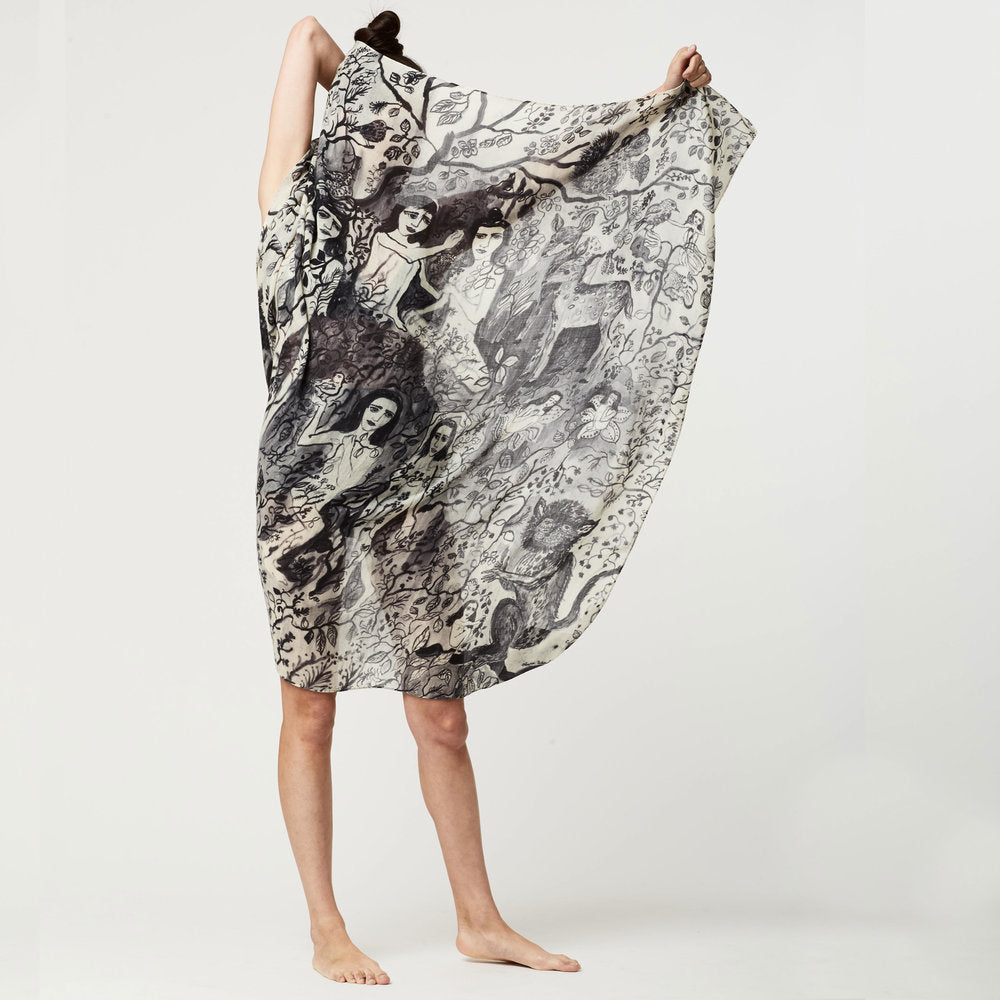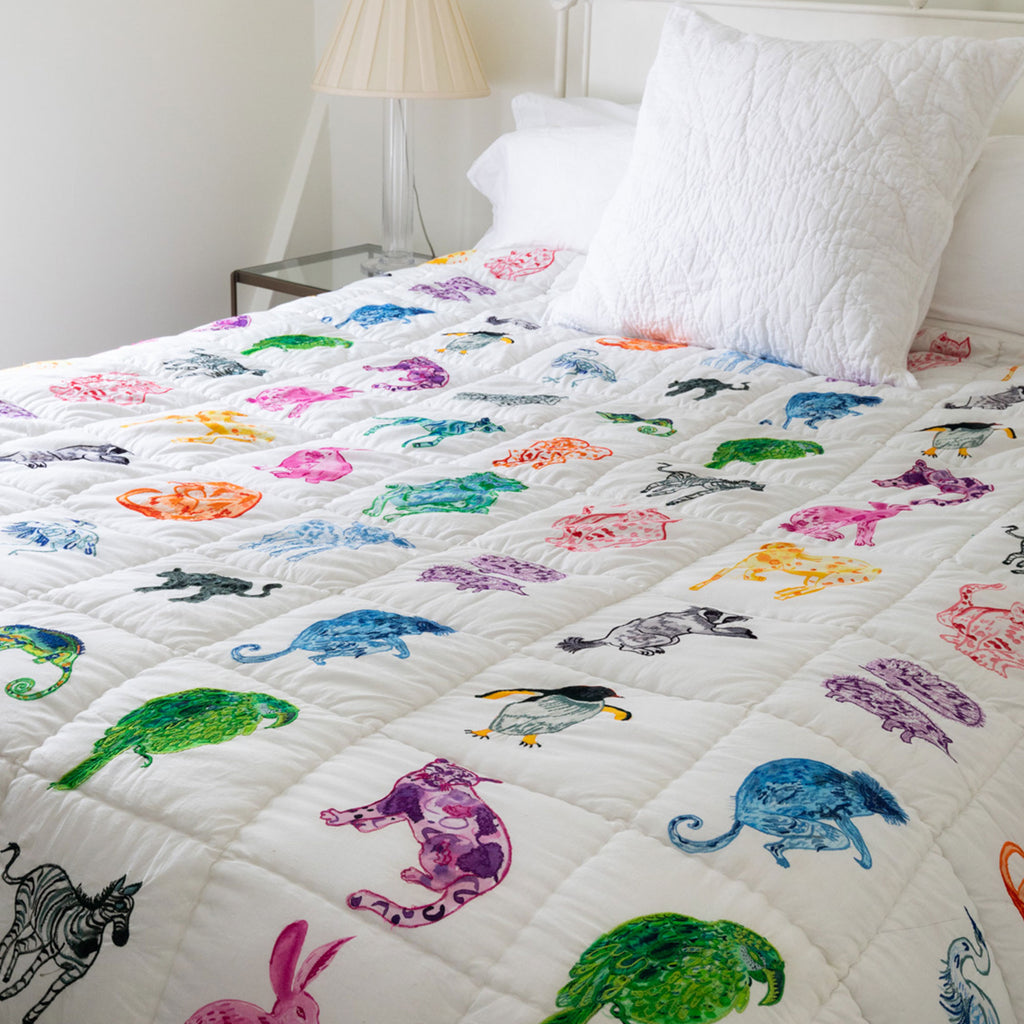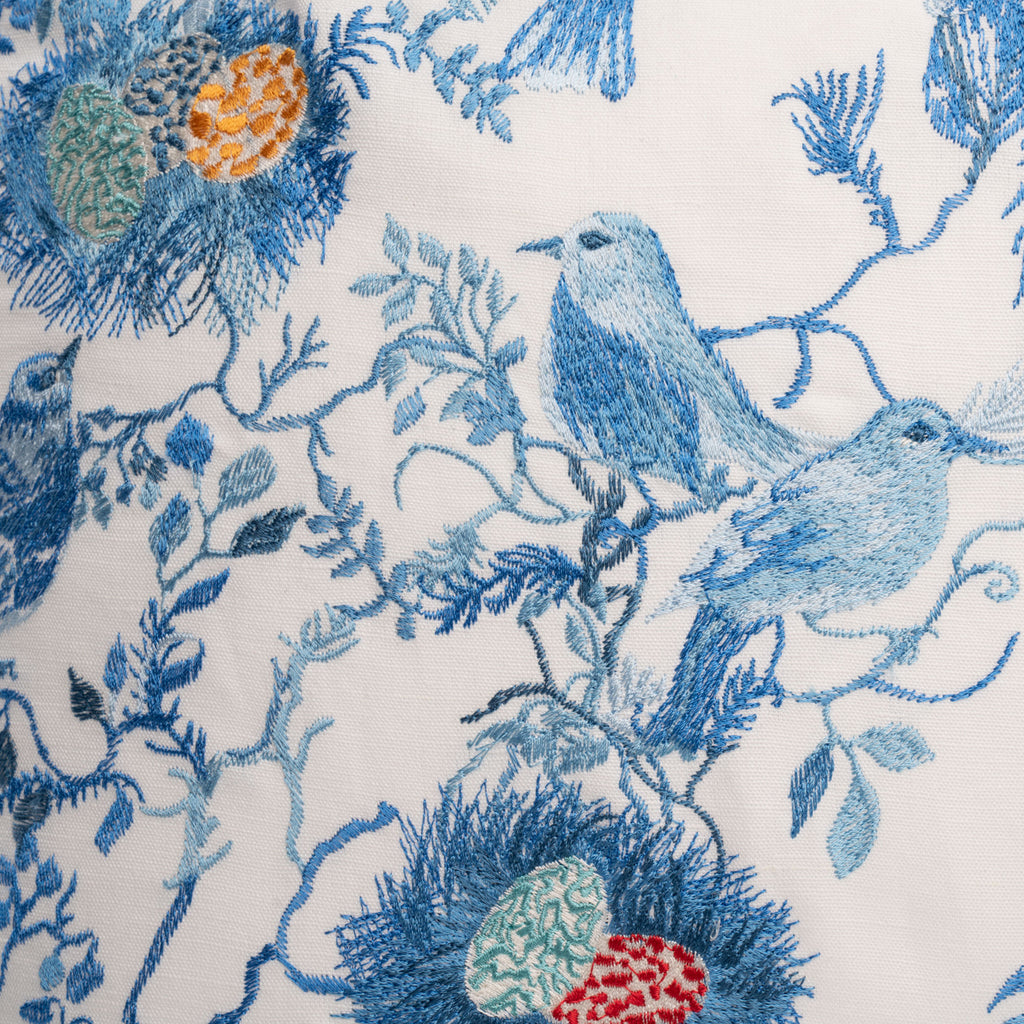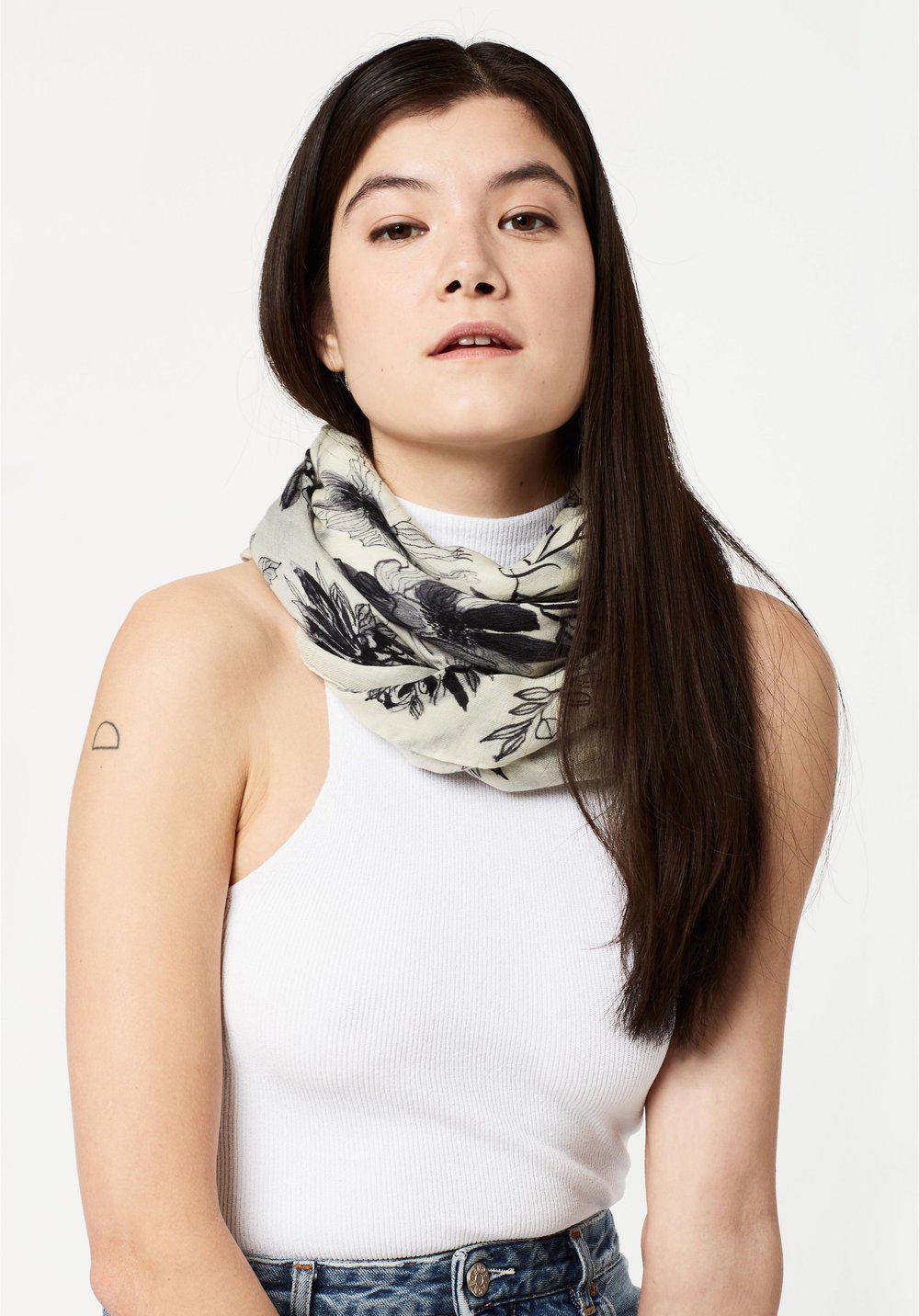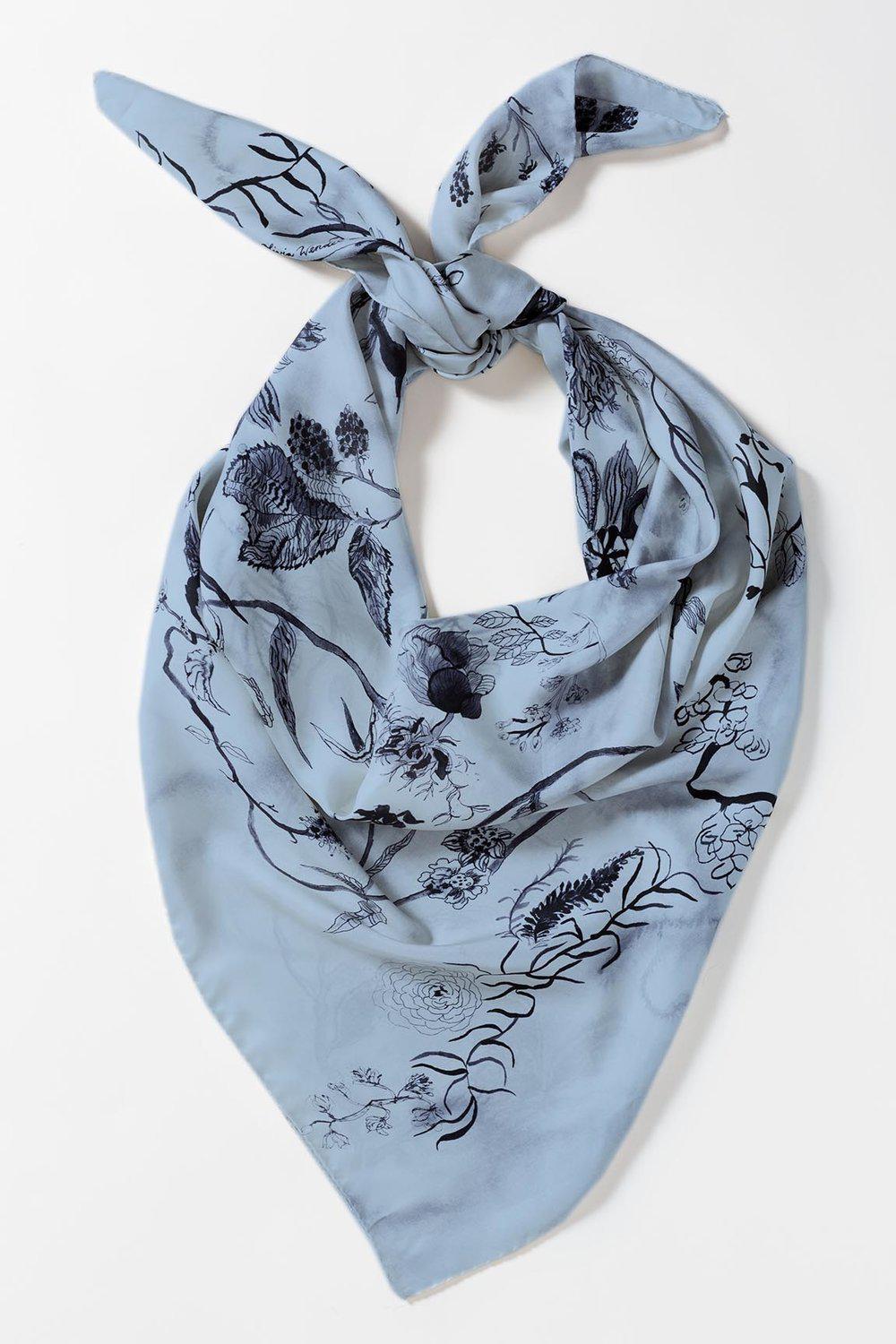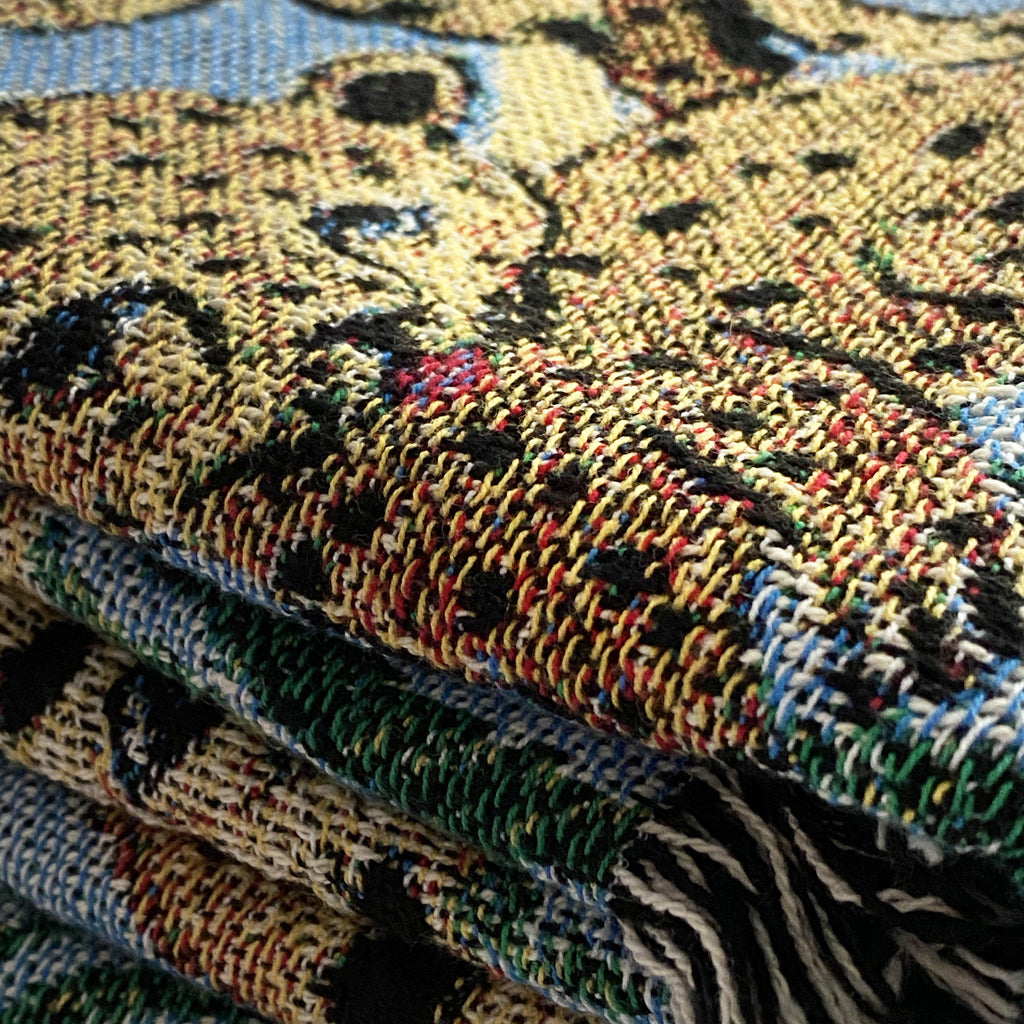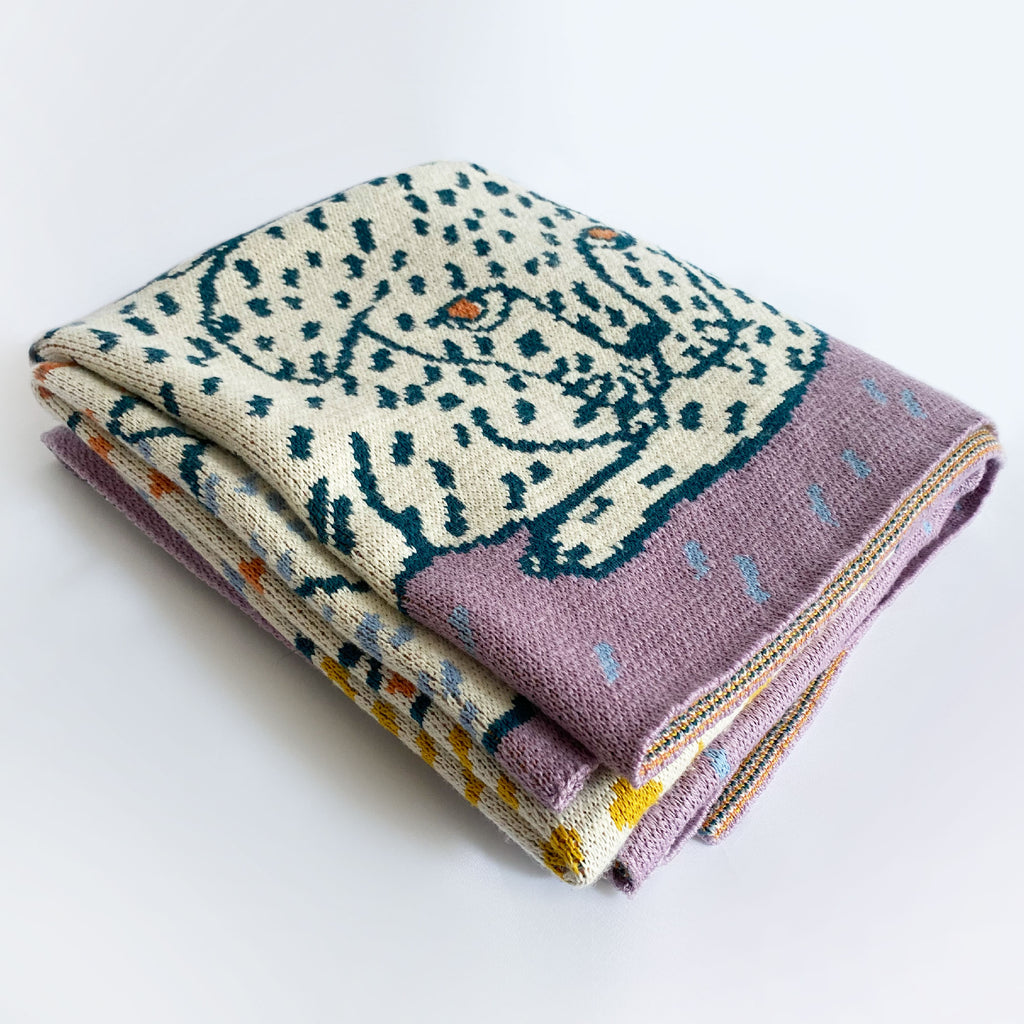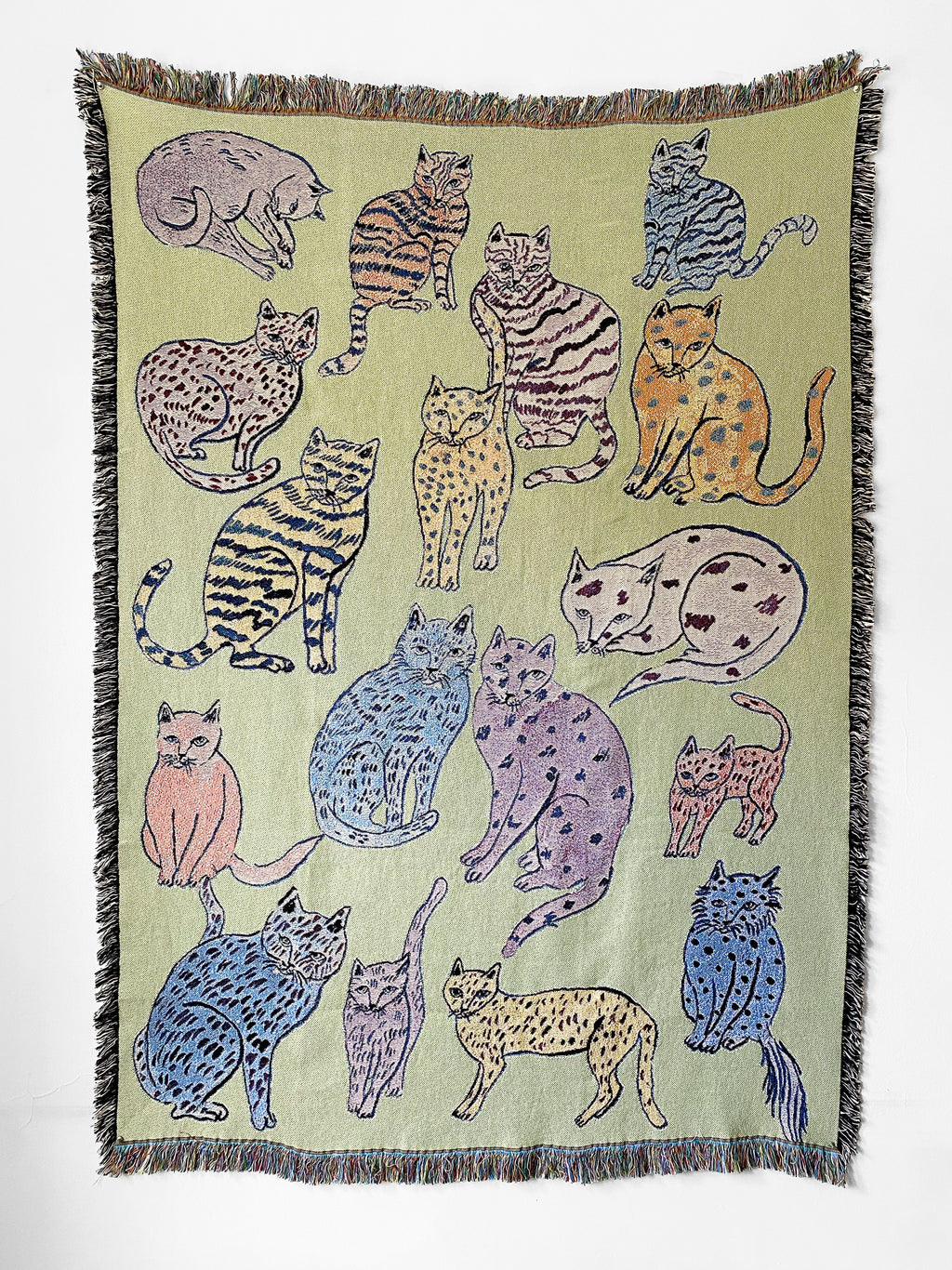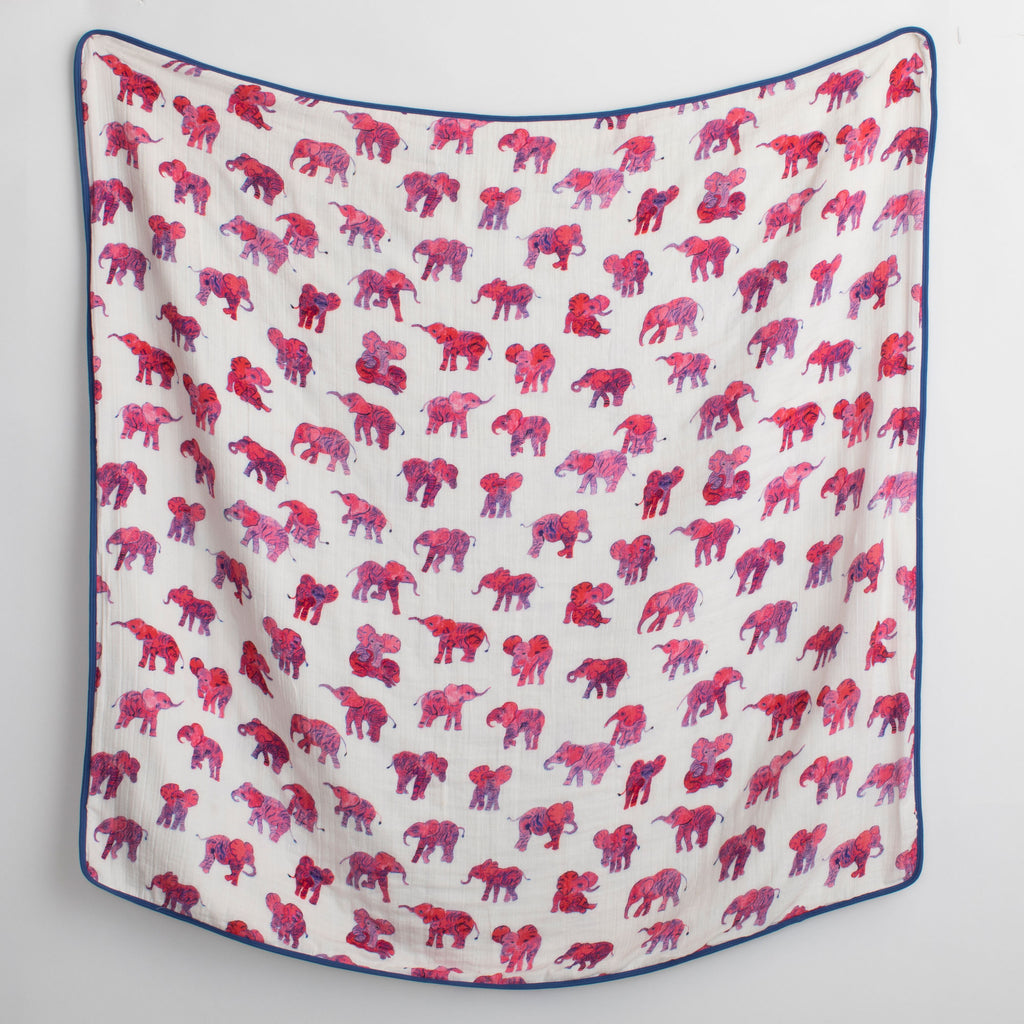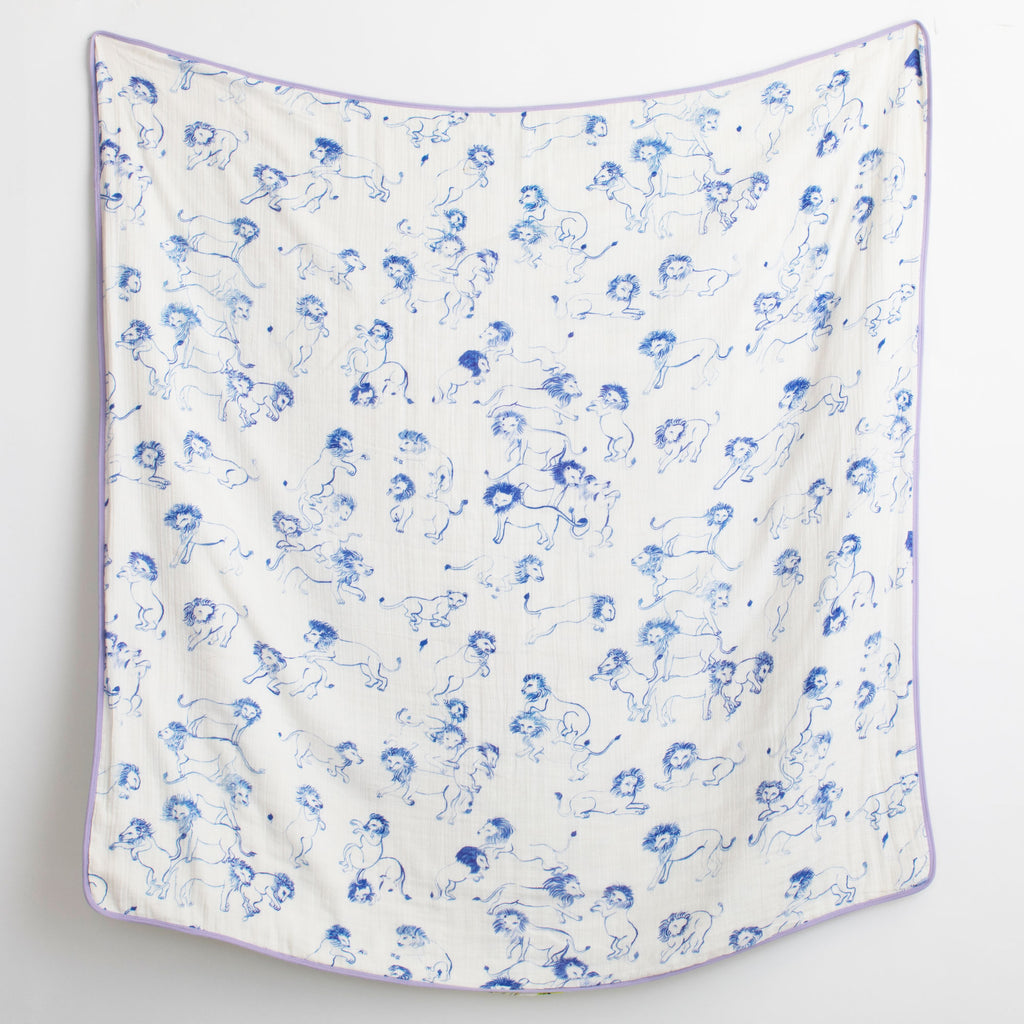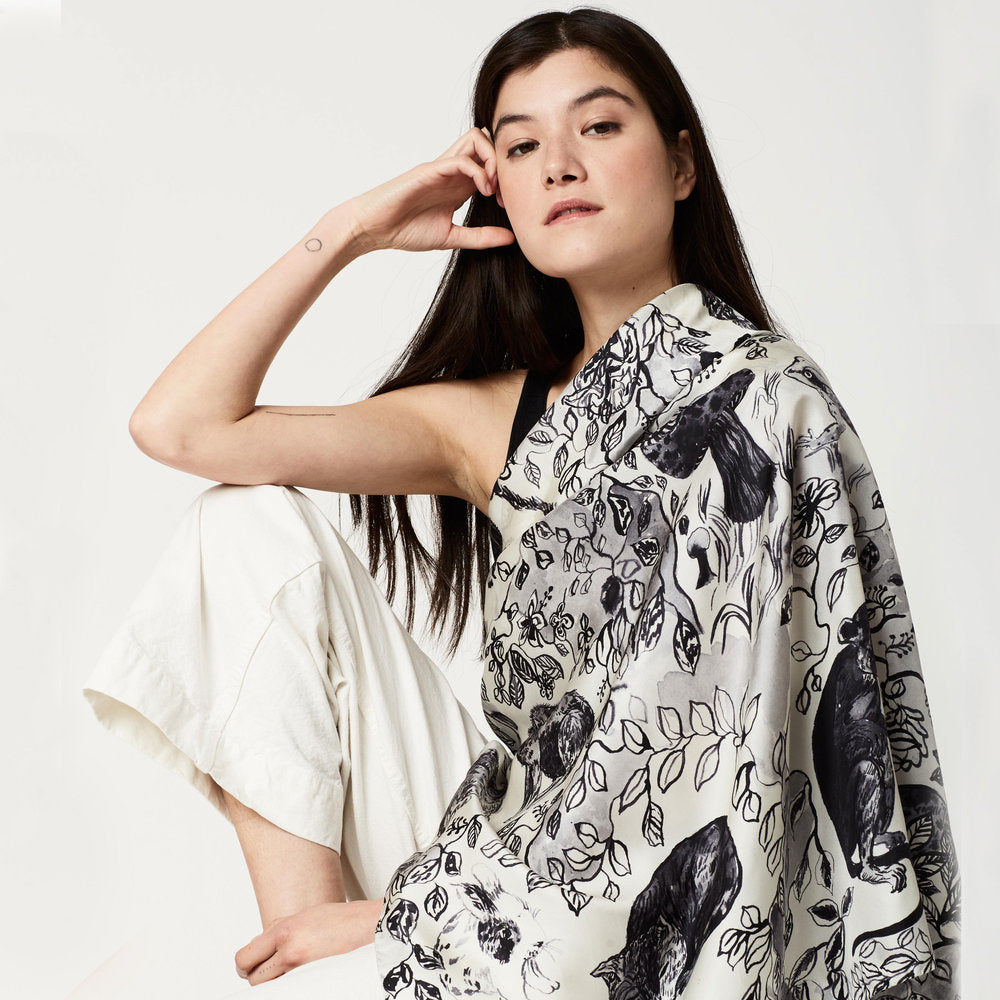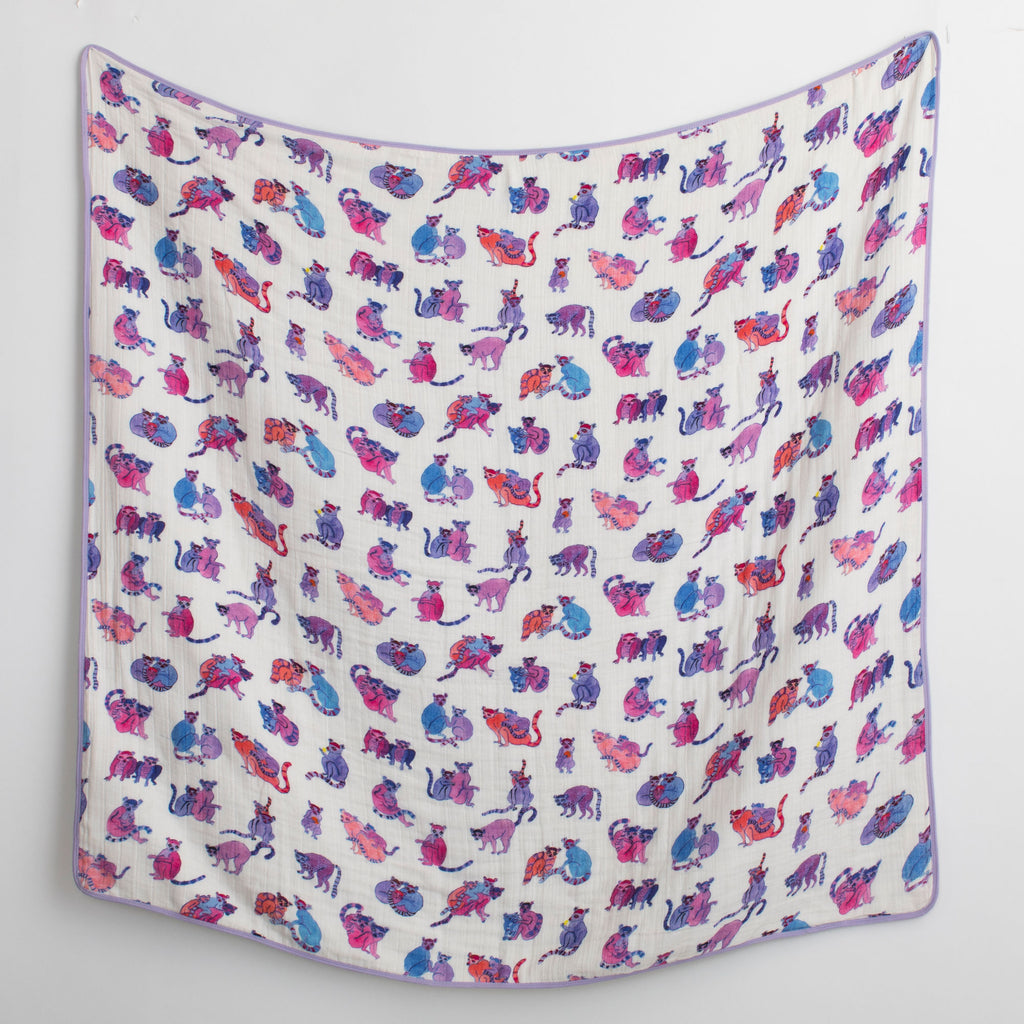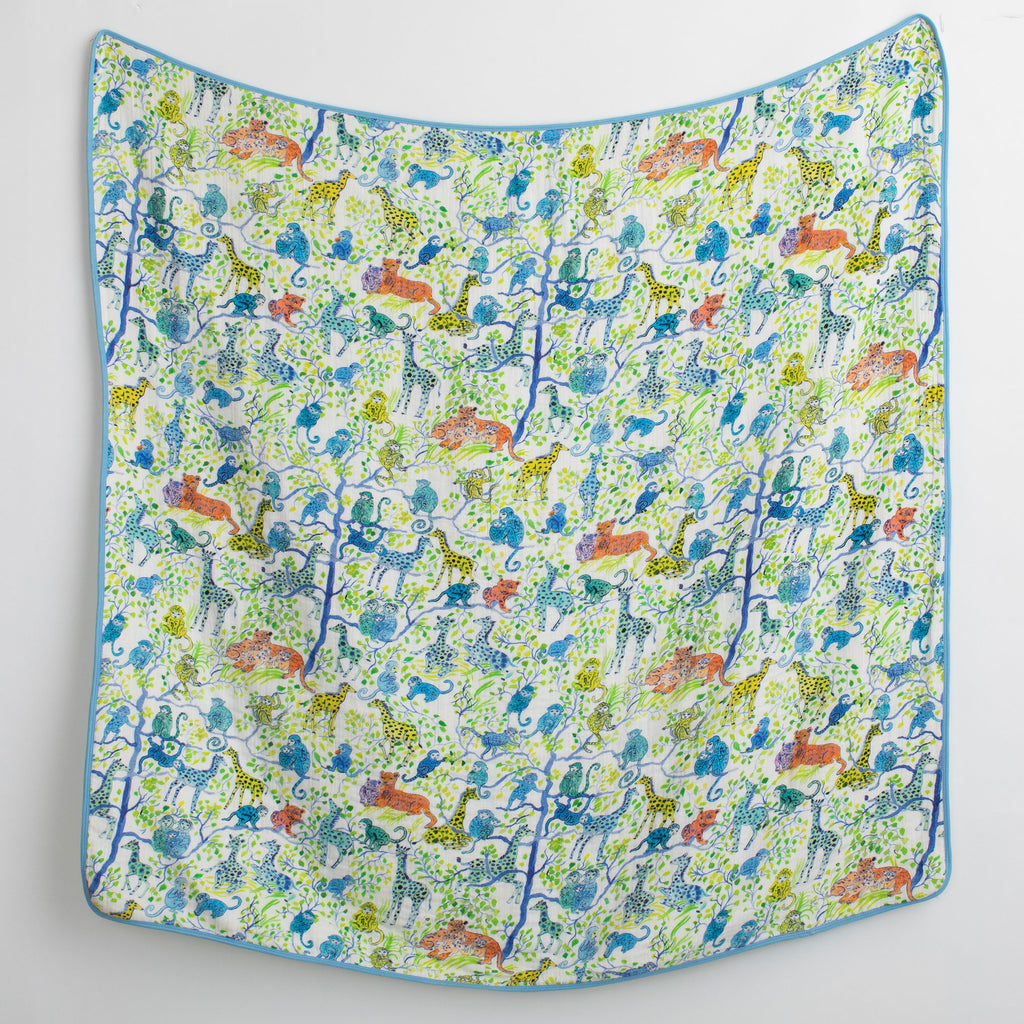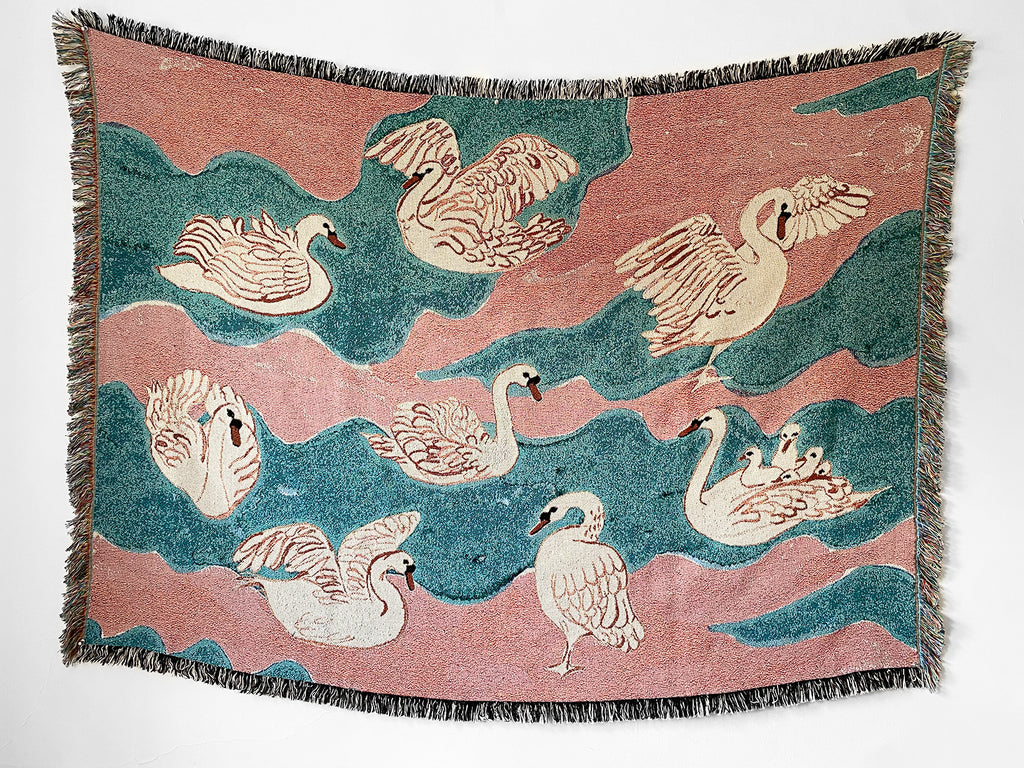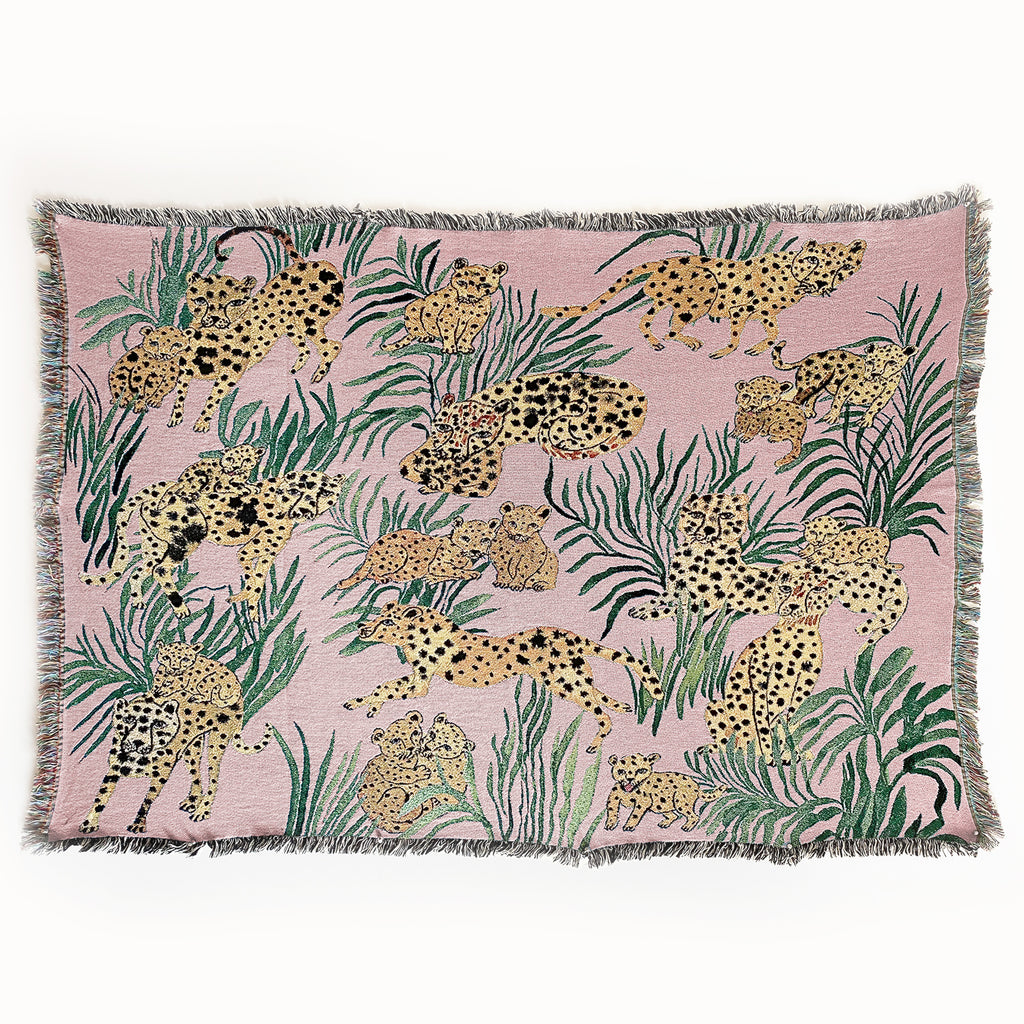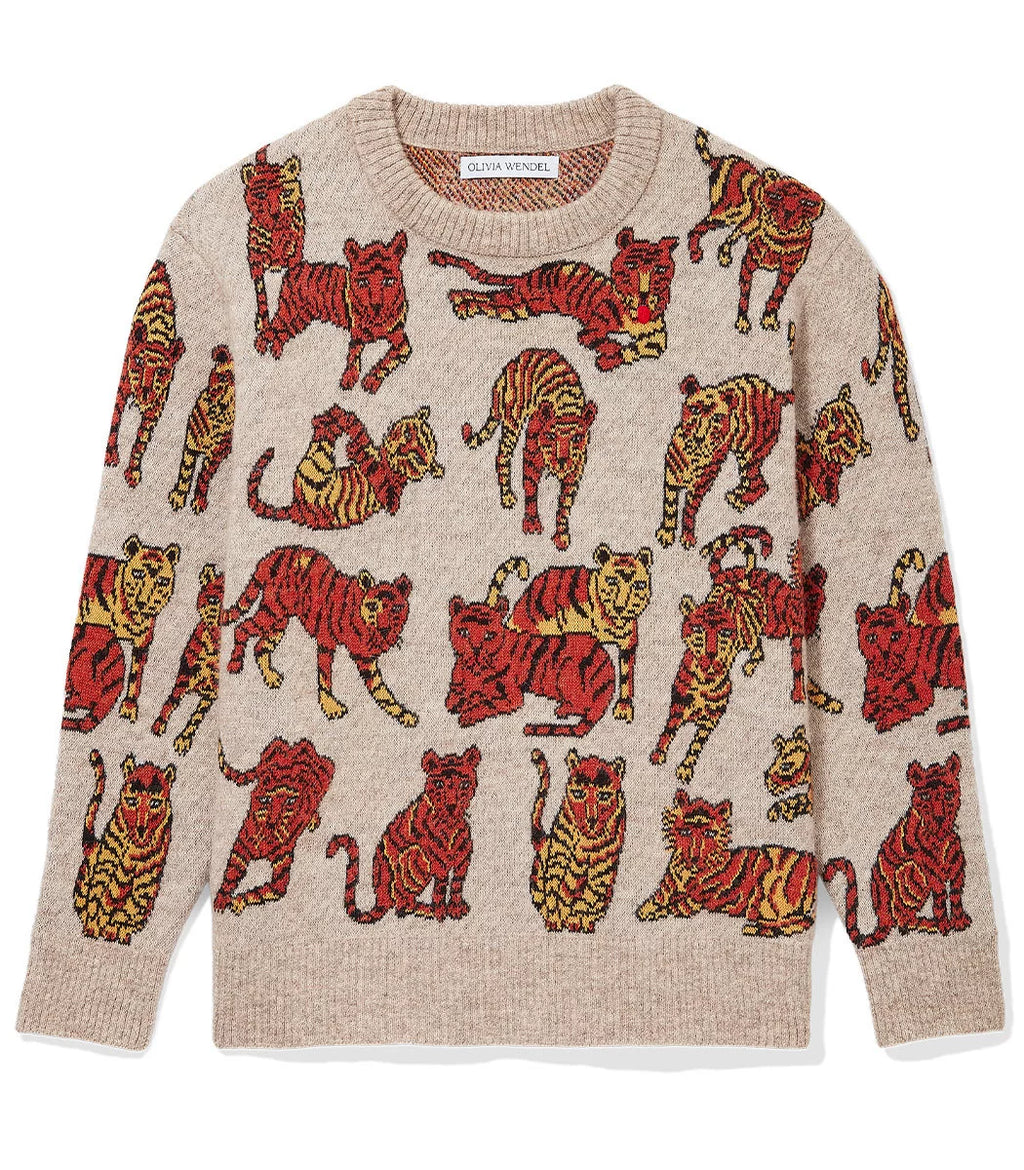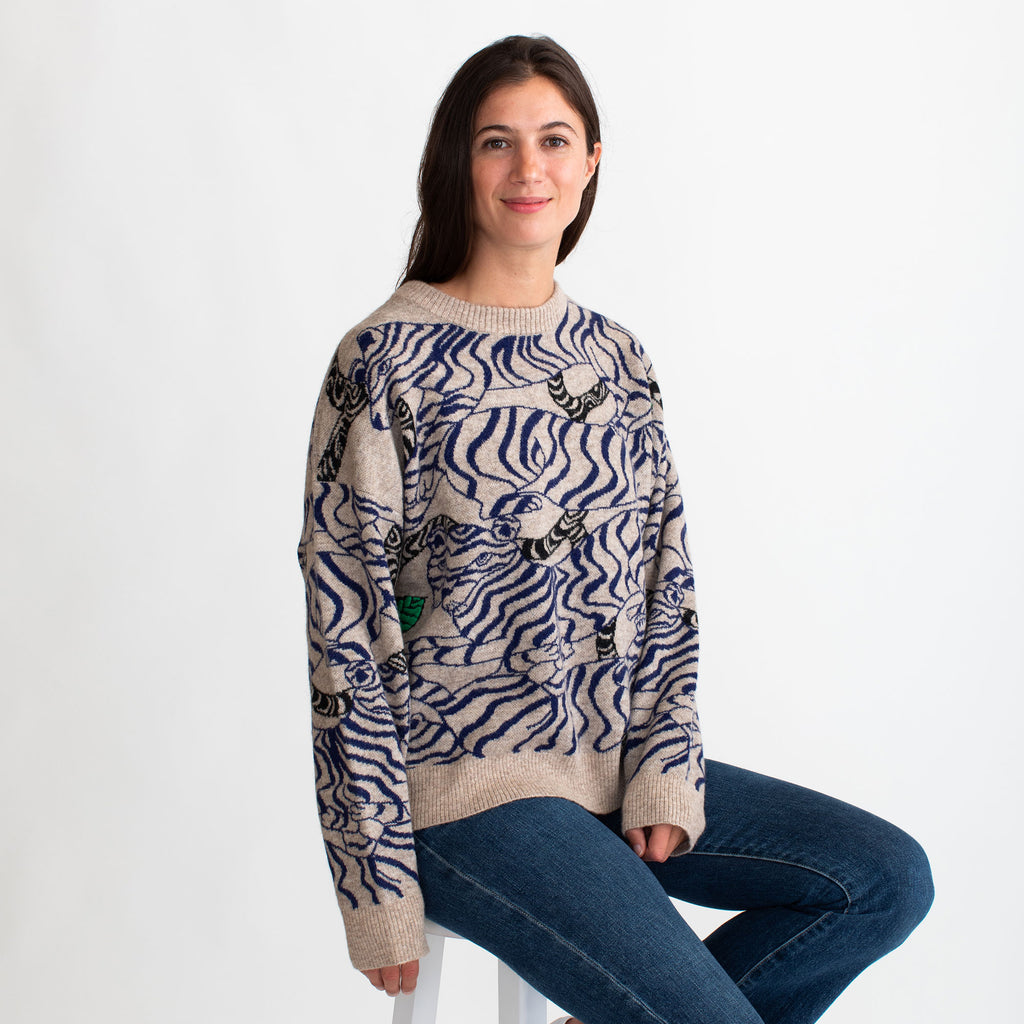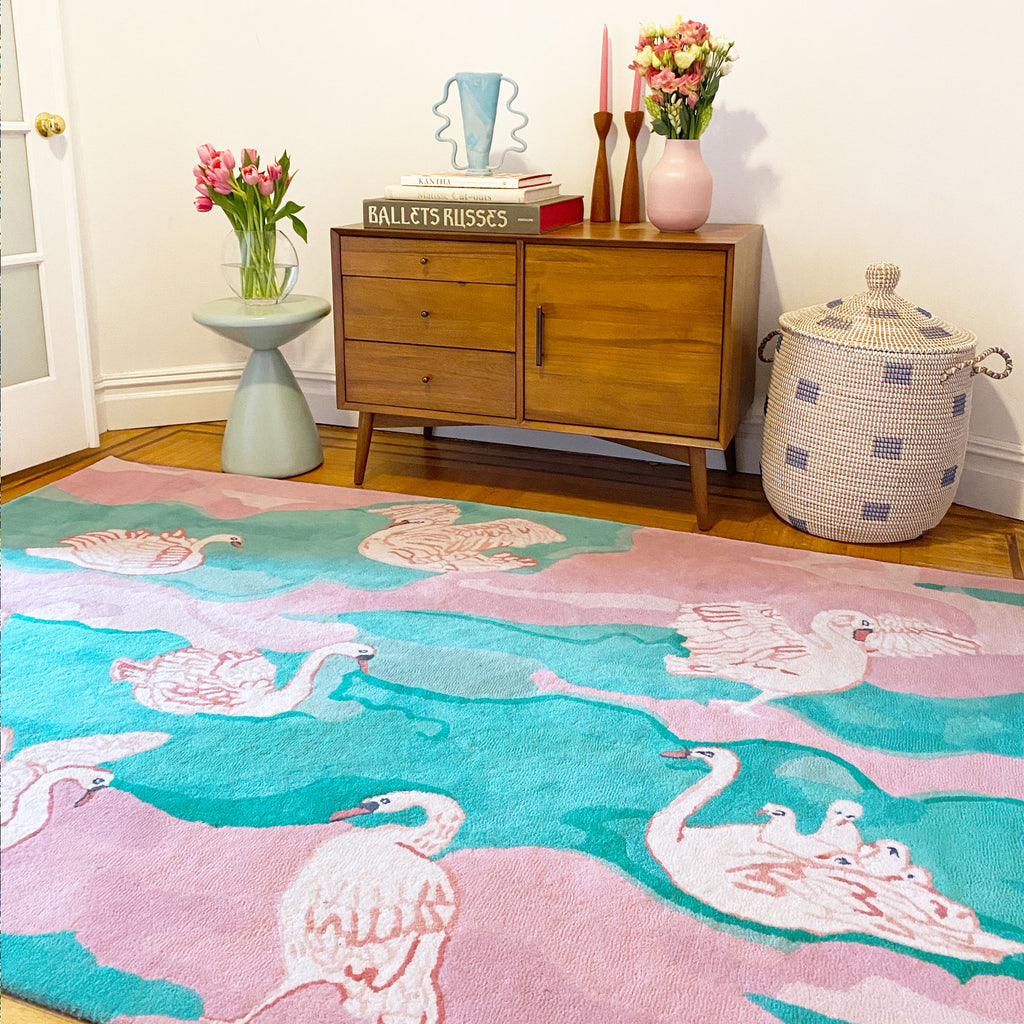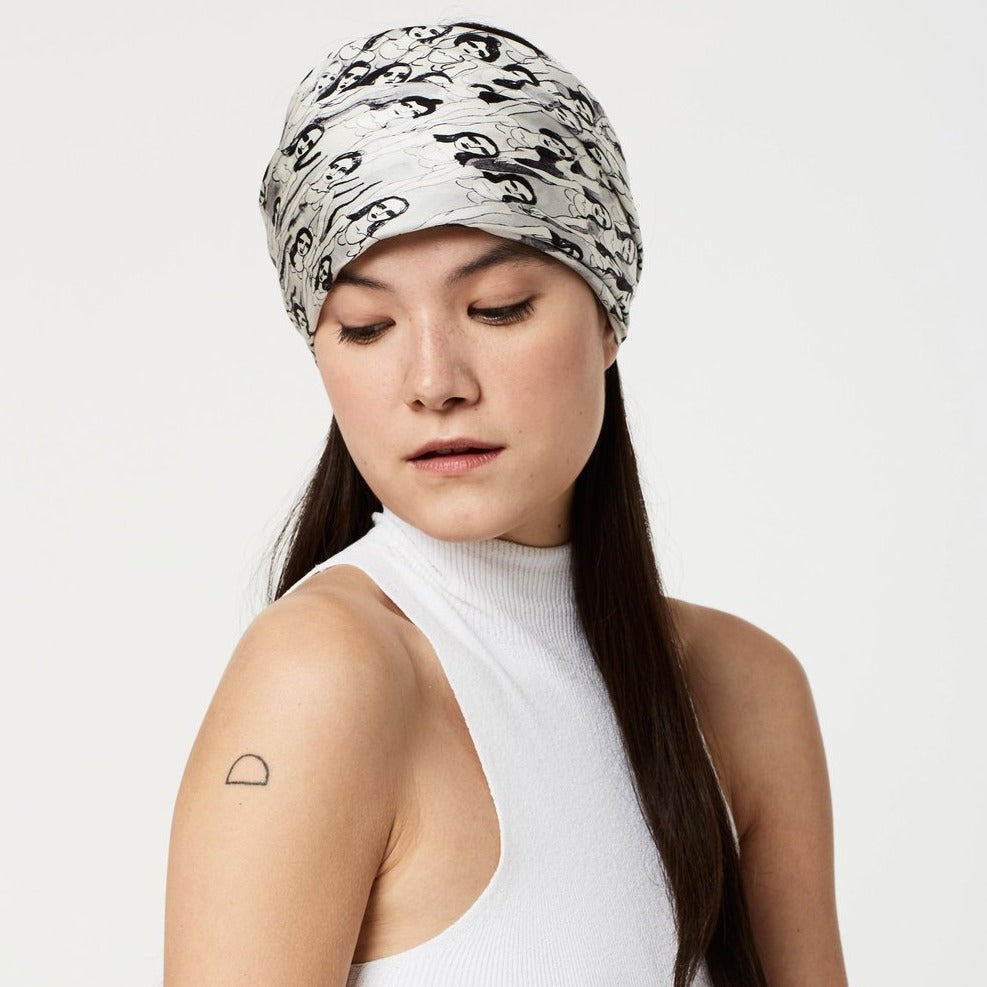Wondering if your curtains should touch the floor? Need help measuring for the perfect fit? This guide on curtain lengths answers these key questions and more, helping you choose the right curtains for every room. Whether you're aiming for a formal, elegant look or a more practical, contemporary style, understanding the nuances of curtain lengths can make a significant difference in your home decor.
From selecting the appropriate fabric to mastering the art of precise measurements, this comprehensive guide will equip you with all the knowledge you need to achieve the ideal curtain setup for any space. Dive in to discover expert tips, common pitfalls to avoid, and creative ideas to enhance your windows with the perfect curtains.
Understanding Standard Curtain Lengths
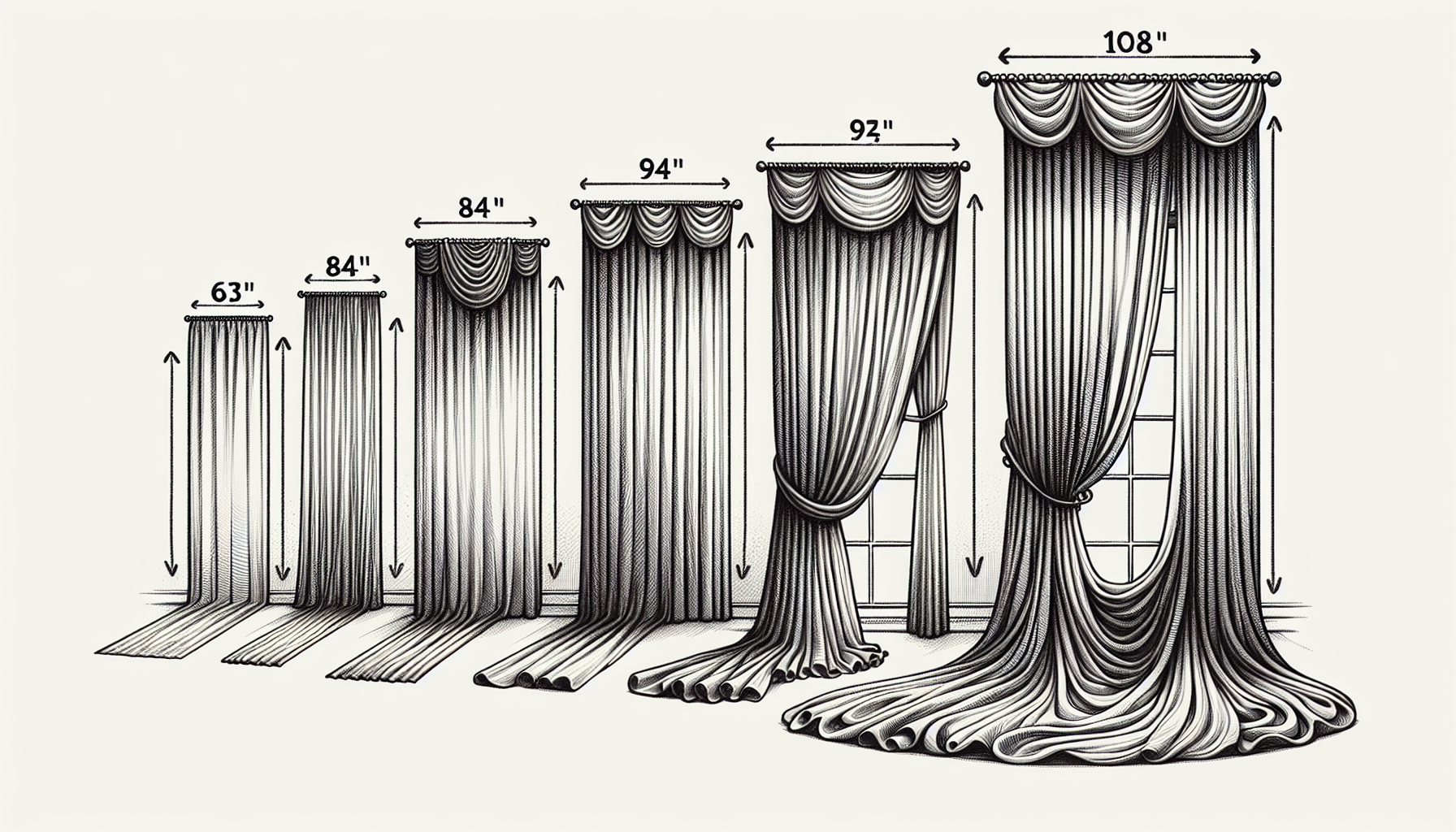
Curtains come in several standard lengths, each suited for different window sizes and room styles. These standard lengths provide a convenient starting point for most homes, allowing you to achieve a cohesive look without the need for custom measurements. By selecting your chosen curtain length from the standard options, you can easily find the perfect fit for your space. The standard lengths are:
-
63 inches
-
84 inches
-
95 inches
-
108 inches
However, if your windows don’t fit these standard dimensions or if you have specific design preferences, custom lengths are also an option. Custom curtains can be tailored to the unique architecture of your home, providing a perfect fit and a polished appearance. This flexibility ensures that every room, from your living room to your bedroom, can be outfitted with curtains that complement its decor and functional needs.
Different rooms benefit from different curtain lengths. For instance, longer curtains can create a formal, elegant look ideal for dining rooms and living rooms, while shorter curtains might be more practical in kitchens and bathrooms. Understanding these standard lengths and how they can be applied across various spaces is the first step in selecting the perfect curtains for your home.
Measuring for the Perfect Curtain Length
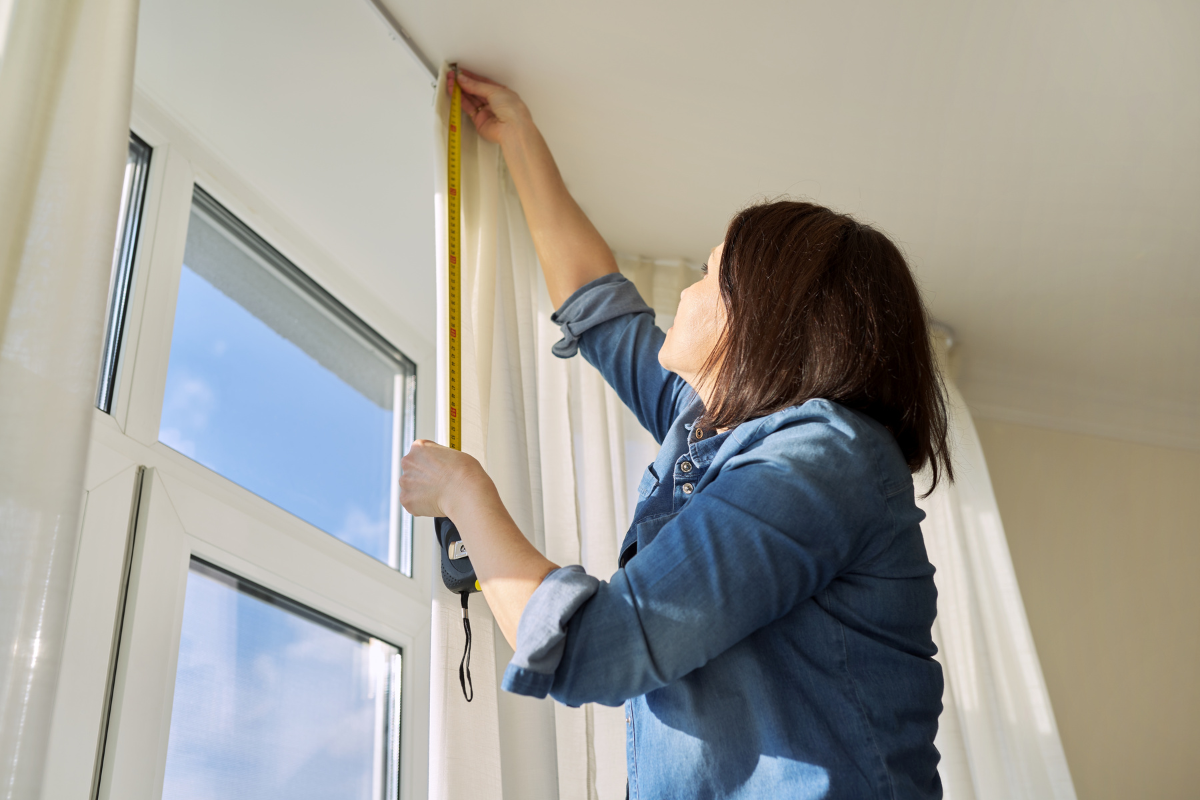
To achieve the perfect curtain length, precise measurements are indispensable. Using a metal tape measure ensures precision, helping you avoid the common pitfalls of curtains that are too short or too long.
Start by determining the width of your window from the frame’s outer edges. This measurement will inform the width of your curtain rod, which should extend beyond the window frame to allow the curtains to hang properly.
Then, decide the height for mounting the curtain rod, taking into account the desired curtain length and the overall appearance you want to achieve.
Lastly, take the measurement from the top of the window frame to where you want the curtains to end. Whether you want them to touch the floor, hover just above it, or puddle dramatically, these measurements will guide you to the perfect curtain length.
Determining Rod Width
For a flawless fit, the curtain rod should be 8 to 12 inches wider than the window. This extra width allows the curtain panels to hang on either side of the window when open, maximizing natural light and giving the illusion of a larger window.
If you’re mounting the rod above the window trim, add 3 inches to both sides of the window width for a more balanced look. For rods mounted inside the trim, the rod length should match the window width. By following these guidelines, you’ll ensure that your curtains hang beautifully and function effectively.
Deciding on Rod Height
The room’s aesthetic is greatly influenced by the height at which you install the curtain rod. Generally, placing the rod 4 to 6 inches above the window frame creates an illusion of taller windows and allows more natural light to flow into the room,.
For an even more dramatic effect, you can install the rod higher, up to 12 inches above the window frame, especially if you’re using longer curtains. This technique not only enhances the perceived height of the room but also adds a touch of elegance and sophistication.
Measuring Curtain Length
To measure the curtain length, begin at the top of the window frame and measure downwards to the preferred endpoint. This could be just touching the floor, hovering slightly above it, or puddling on the floor.
Adjust your measurement based on the style you prefer. For instance, if you want the curtains to puddle, add a few extra inches to your measurement. If you prefer them to hover, subtract a small amount to ensure they don’t touch the floor. This careful attention to detail will help you achieve the perfect curtain length for your space.
Different Curtain Length Styles
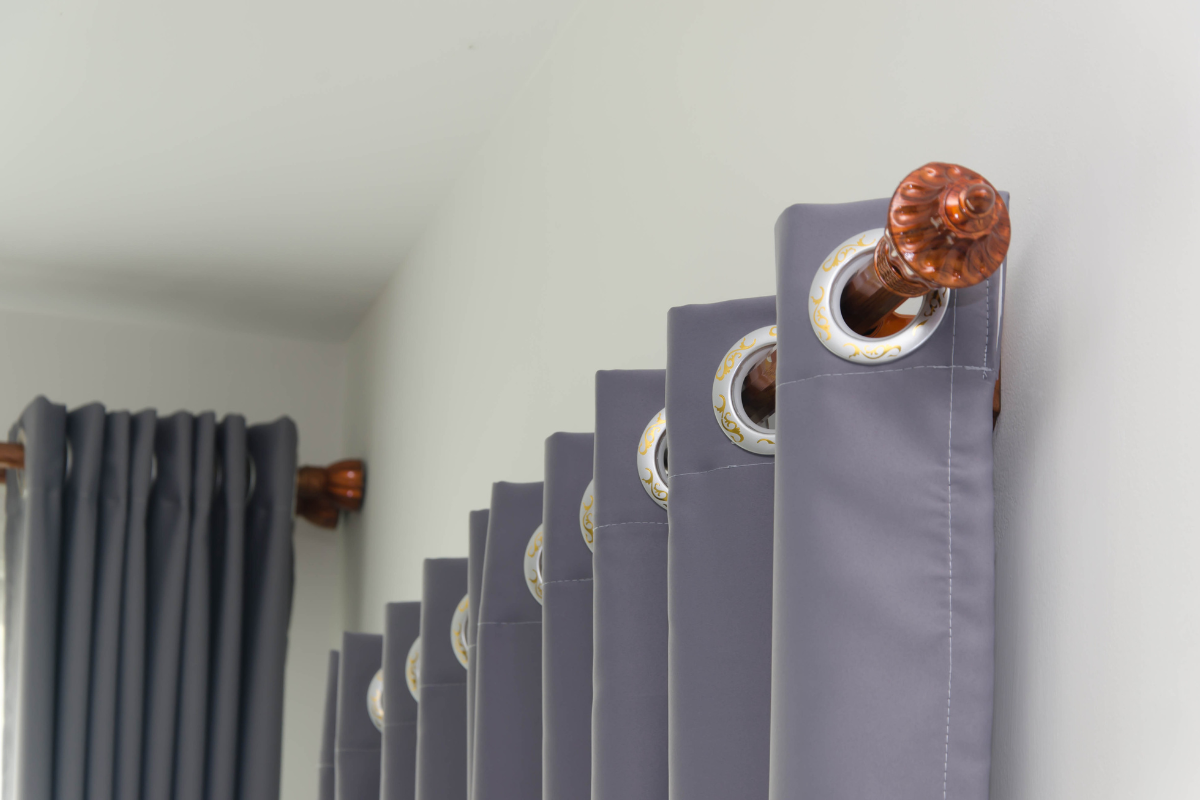
Curtain length styles can dramatically influence the ambiance of a room. The three primary styles are:
-
Floor-length curtains: These offer a sophisticated elegance and are perfect for formal spaces.
-
Hovering curtains: These curtains hang just above the floor, creating a contemporary and practical look.
-
Puddled curtains: These curtains are longer than necessary and create a luxurious and dramatic effect.
Each style offers a unique aesthetic, allowing you to choose the perfect curtains for your space.
The style you choose hinges on the design, functionality of your room and your personal preference. Designers often recommend that curtains touch the floor, as this creates a more polished and intentional look.
Understanding these styles and their impacts on your room can help you make an informed choice that enhances your home’s overall appeal.
Floor-Length Curtains
Floor-length curtains are a stylish, low-maintenance choice that can enhance the aesthetics of any room, including the dining room. These curtains are ideal for formal living or dining areas, where they contribute to a polished and sophisticated ambiance.
Even if there’s a radiator beneath the window, floor-length curtains can still be a stylish feature, provided they’re hung correctly. Their versatility and elegance make them a popular choice for a variety of interior designs.
Hovering Curtains
Practical and easy to maintain, hovering or floating curtains are a great choice. They hover just above the floor, making them an excellent choice for high-traffic areas or homes with pets and children.
These curtains are forgiving if the measurements aren’t exact, and they won’t obstruct radiators or collect dust like floor-touching curtains. Ideal for contemporary spaces, hovering curtains offer a modern look with minimal fuss.
Puddled Curtains
Puddled curtains infuse a room with an element of drama and elegance. To achieve the ‘Puddle’ effect, add extra inches to the curtain length so they pool on the floor, creating a luxurious and traditional vibe.
However, this style requires more maintenance as the extra fabric tends to gather dust and can be a tripping hazard for young children. Different materials will puddle differently, so choose your fabric carefully to maintain the desired effect.
Choosing Curtain Length Based on Room Type

Choosing the appropriate curtain length requires consideration of your personal preference, room needs, window size, and ceiling height. Each room in your home may benefit from different curtain lengths based on these factors.
For instance, a more formal look might require curtains to touch the floor or even puddle, while a modern aesthetic might prefer them hovering slightly above the floor. Understanding how these elements interact can help you choose the ideal curtain length for each space.
Living Rooms and Dining Rooms
Floor-touching curtains instill a sense of elegance and grandeur in living and dining rooms. With a curtains touch of sophistication, floor-length and puddled curtains are ideal for creating a formal and elegant appearance in these spaces.
Sheer fabrics can provide a balance between privacy and natural light, making them suitable for living spaces where an airy feel is desired.
Bedrooms
Floor-length curtains, offering privacy and light control, are typically beneficial in bedrooms. These curtains should hang about 1 cm above the floor to avoid looking awkward while still providing an elegant appearance.
Heavier fabrics like velvet are ideal for bedrooms, providing both warmth and better light control,.
Kitchens and Bathrooms
Shorter curtains are generally more fitting in functional rooms like kitchens and bathrooms. These curtains offer functionality and maintain practicality in bustling environments.
For rooms with a deep windowsill or radiator, sill-length curtains are recommended to avoid blocking heat and to fit the space better.
Fabric Choices and Their Impact

Both the appearance and functionality of your curtains, as part of your window treatments, can be significantly influenced by your fabric choice. Different fabrics offer varying degrees of light filtration, privacy, and aesthetic appeal.
Velvet and other heavy fabrics add a touch of luxury and are perfect for creating a sophisticated ambiance in formal settings. In contrast, lighter fabrics like linen provide gentle light filtration and a relaxed, inviting atmosphere.
Heavy Fabrics
Heavy fabrics like velvet can infuse any room with a feeling of warmth and opulence, making them perfect for creating a cozy atmosphere. These fabrics are ideal for spaces where you want to add a touch of luxury, such as formal living rooms, dining rooms, or bedrooms.
However, heavy fabrics may require more maintenance. For instance, velvet curtains might need regular steaming to keep the folds neat and to prevent dust from accumulating. While they offer a dramatic and elegant look, consider the upkeep they might demand.
Light Fabrics
To create a relaxed yet sophisticated atmosphere, light fabrics like linen are an excellent choice. They allow for gentle light filtration, making them perfect for rooms where you want to maintain a soft, natural light while still ensuring some privacy.
These fabrics are also easier to clean and maintain, which makes them suitable for kitchens and bathrooms where practicality is crucial. Their breezy, casual look can enhance the visual appeal of these spaces without overwhelming them.
Practical Considerations for Curtain Lengths
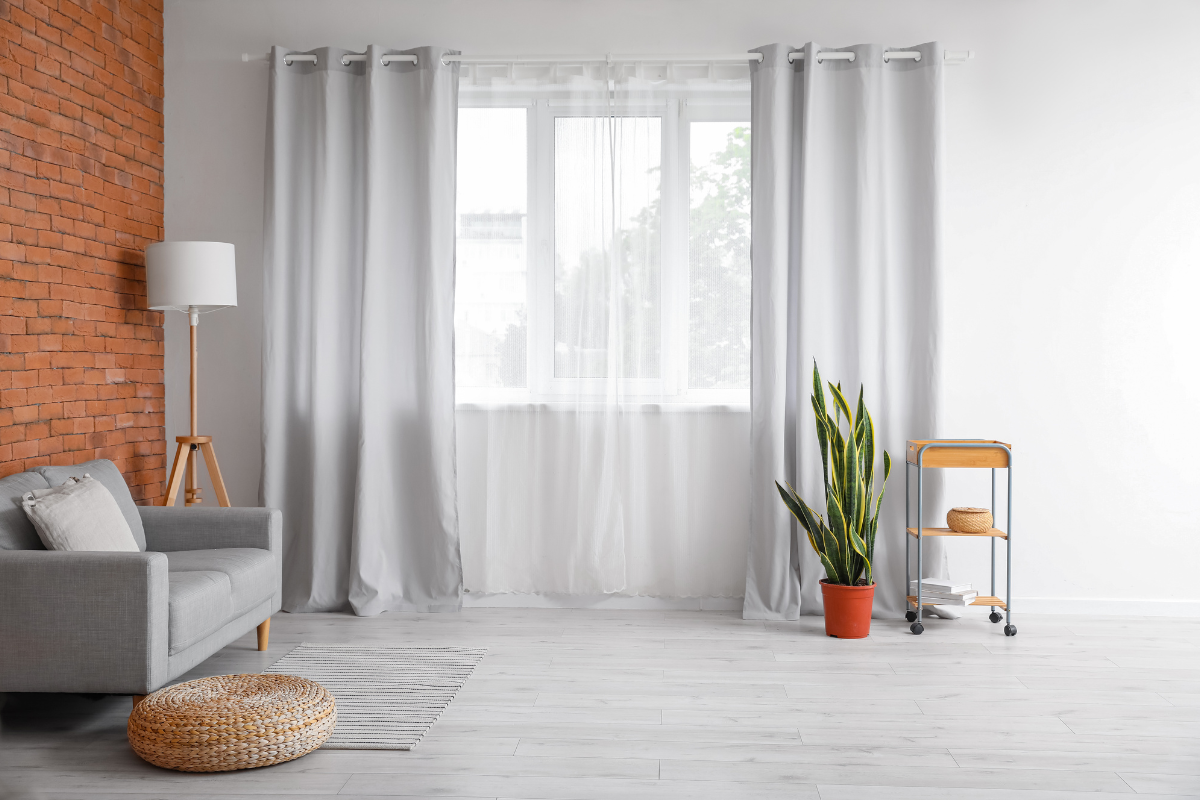
When deciding on curtain lengths, practicality ought to be a significant factor. The specific room and window where the curtains will be hung play a significant role in this decision. For instance, in bathrooms and kitchens, moisture resistance and ease of cleaning are crucial factors.
Floor-length curtains are generally preferred by interior designers for their aesthetic appeal, but they may not always be practical, especially in high-traffic areas or homes with young children or pets. Shorter curtains might be a better option in such settings to avoid tripping hazards and to make cleaning easier.
Cleaning and Maintenance
Various curtain lengths necessitate different degrees of maintenance. Curtains that touch or puddle on the floor can collect dust and require more frequent cleaning, making them less ideal for high-traffic areas.
Puddled curtains, in particular, are not suitable for homes with pets or young children, as they can gather dirt and pose a tripping hazard. Opting for curtains that hover just above the floor can alleviate some of these maintenance issues while still providing a stylish look.
Pets and Children
For households with young children or pets, sill-length curtains are a safer option. These curtains end at the window sill, reducing the risk of tripping and making it easier to clean the floor.
If you prefer the floating curtain style, ensure they hover at least half an inch above the floor to avoid accumulating pet hair or interfering with mopping and vacuuming. This consideration can significantly impact the safety and cleanliness of your home.
Common Mistakes to Avoid
Evading common errors in curtain length and rod placement can substantially alter the overall aesthetics of your room. Improper curtain lengths, whether too short or too long, can make the room appear disproportionate.
Short curtains can visually truncate the height of a room, making it look incomplete and unfinished. On the other hand, excessively long curtains can look messy and pose a tripping hazard. Ensuring the right length is crucial for a well-balanced and harmonious space.
Too Short or Too Long
Curtains that are too short can give a room an awkward, unfinished look, much like high-water pants. Consider using rings to hang the curtains if you find them too short. Another option is to add extra fabric at the bottom for a layered effect.
Excessively long curtains, on the other hand, can clutter a space and create hazards, especially in homes with children or elderly residents. Striking the right balance is essential for both aesthetics and safety.
Incorrect Rod Placement
Incorrect rod placement can also affect the functionality and appearance of your curtains. Mounting the rod too close to the window frame can reduce the amount of natural light entering the room.
Properly placed rods can make windows appear larger and more grand, enhancing the overall aesthetic of the room. Ensuring your rods are placed correctly is just as important as choosing the right curtain length.
Tips for Hanging Curtains
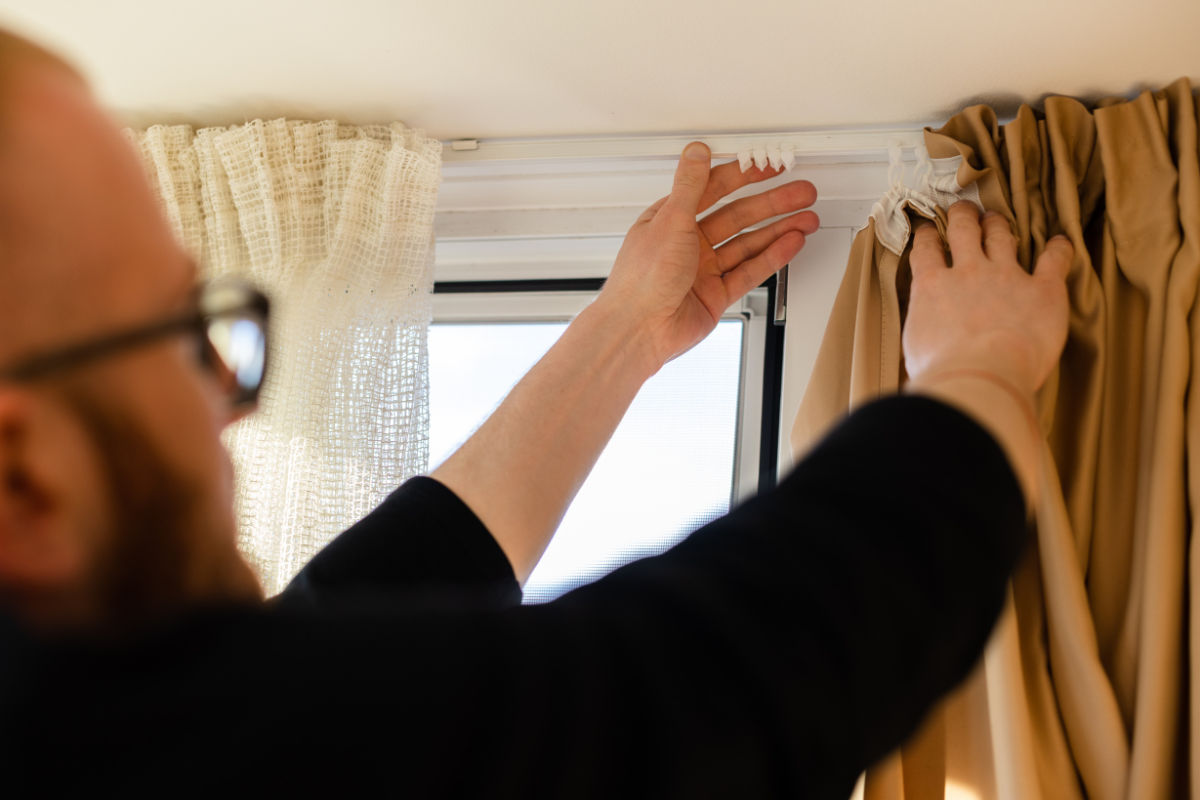
Proper curtain hanging entails the use of sturdy hardware, mounting them high and wide, and correct rod placement. Using a template can help ensure that curtain rods are hung at the same height for every window, creating a uniform look throughout the room.
Opt for rods that do not telescope to avoid snagging curtain rings when opening or closing the curtains. Ensuring the width of the rods is about 10 to 12 inches wider than the window and that they stick out at least 3 or 4 inches beyond the window on each side will enhance the curtain’s appearance and functionality.
Hanging Curtains Wide and High
Mounting curtains at a higher position can create an illusion of a taller ceiling and infuse drama into the room. Positioning the rod at approximately half to two-thirds of the distance between the window trim and the ceiling can create a more spacious look.
Curtains, a popular window treatment, should be hung about four to six inches beyond the window frame to make the window appear larger. This technique not only enhances the room’s appearance but also maximizes natural light intake.
Using the Right Hardware
Durable curtain hardware ensures that the weight of the curtains is adequately supported, preventing sagging and potential damage. Some key features of strong, well-built rods and brackets include:
-
Sturdy construction
-
High weight capacity
-
Secure installation
-
Rust-resistant materials
Investing in durable curtain hardware provides a long-term solution, reducing the need for frequent replacements.
Choosing the appropriate hardware also enhances the aesthetic appeal, contributing to the overall style and sophistication of the room. Decorative rods, finials, and brackets come in various styles, materials, and finishes, allowing for customization to match any decor.
Summary
Choosing the right curtain length involves understanding standard lengths, measuring accurately, and considering the specific needs of each room. Different curtain styles—floor-length, hovering, and puddled—offer various aesthetic and practical benefits.
By taking into account fabric choices, practical considerations, and common mistakes, you can ensure that your curtains not only fit perfectly but also enhance the overall look and feel of your home. Remember, the right curtain length can dramatically transform your space, making it more elegant, cozy, or modern, depending on your preferences.
Frequently Asked Questions
What are the standard curtain lengths?
Standard curtain lengths are typically 63 inches, 84 inches, 95 inches, and 108 inches, but custom lengths are also available to suit various window sizes and design preferences.
How do I measure my windows for curtains?
To measure your windows for curtains, use a metal tape measure for accuracy. Measure the width from the outer edges of the frame, adding extra inches for the rod width, and measure from the top of the window frame to the desired curtain length.
What is the best curtain length for a living room?
For a formal and elegant look in your living room, opt for floor-length or puddled curtains. Sheer fabrics can also offer a balance between privacy and natural light.
Are heavy fabrics suitable for all rooms?
Heavy fabrics like velvet are best suited for formal settings like living rooms and bedrooms, providing luxury and warmth. However, they may not be practical for all rooms due to the maintenance they require.
How high should I hang my curtain rod?
Hang your curtain rod 4 to 6 inches above the window frame to create an illusion of taller windows. For a more dramatic effect, you can install the rod even higher.



